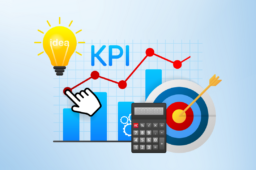
The Importance of Stakeholder Communication in Project Success
- October 01, 2024
- by
- tehreem
Every project manager has experienced the frustration of miscommunication, missed deadlines, or misunderstood goals, all of which threaten project success. But what if you could prevent many of these issues simply by improving stakeholder communication? This crucial aspect of project management is often underestimated, yet it plays a pivotal role in determining the outcome of any project. When communication breaks down, so does trust, progress, and ultimately, the success of your project.
The good news is that by enhancing how you communicate with stakeholders, you can significantly increase the likelihood of your project succeeding. In this blog, we will explore why stakeholder communication is essential for project success, the challenges it presents, and strategies to ensure you get it right from the start.
Why Stakeholder Communication is Critical for Project Success?
Effective communication with stakeholders can be the difference between a successful project and one that falls flat. Stakeholders, including team members, clients, and external partners, influence the project at various stages, and keeping them informed builds trust and transparency. When communication flows freely, decision-making improves, reducing misunderstandings and potential conflicts.
Regular communication also allows project managers to manage stakeholder expectations better. As these expectations evolve throughout the project, keeping stakeholders updated ensures everyone remains aligned with the project’s goals. Moreover, it minimizes risks, such as scope creep, by allowing stakeholders to voice concerns or changes early on. In summary, stakeholder communication is integral to maintaining focus, enhancing collaboration, and ensuring project success.
Types of Stakeholders in Projects
Before diving deeper into the intricacies of communication, it’s essential to understand who your stakeholders are. They can be divided into two main categories:
- Internal Stakeholders: These include the project team, management, and employees directly involved in the project.
- External Stakeholders: Clients, vendors, investors, regulatory bodies, and other parties indirectly affected by the project’s outcome.
Understanding these different types of stakeholders is key to tailoring your communication strategy, as different groups will require different levels of detail and frequency of updates.
Key Elements of Effective Stakeholder Communication
For communication to contribute to project success, it must be clear, consistent, and timely. Here are the critical elements to consider:
- Clarity: Messages should be easy to understand, avoiding technical jargon that might confuse certain stakeholders.
- Consistency: Regular updates help avoid surprises and ensure everyone is on the same page.
- Feedback loops: Two-way communication allows stakeholders to provide input, making them feel valued.
- Tailoring communication styles: Some stakeholders may prefer visual aids, while others may prefer written reports. Tailor your approach to suit each group’s preferences.
Challenges in Stakeholder Communication
Communicating effectively with stakeholders isn’t without its challenges. Here are some common obstacles:
- Diverse Interests: Different stakeholders may have conflicting priorities or varying levels of interest in the project. Balancing these expectations is essential.
- Cultural and Language Barriers: In global projects, cultural differences or language barriers can hinder communication, leading to misunderstandings.
- Conflicting Priorities: Certain stakeholders may push for decisions that benefit them but harm other areas of the project.
- Timing Issues: Delays in communication, especially when updates are needed urgently, can lead to critical errors.
Overcoming these challenges requires careful planning, patience, and adaptability.
Strategies for Effective Stakeholder Communication
Stakeholder Identification and Analysis
The first step in effective stakeholder communication is identifying and analyzing your stakeholders. Ask yourself: Who is directly impacted by the project’s outcomes? Who has decision-making power? Conducting a stakeholder analysis will help you determine their level of influence and interest. Using tools like a stakeholder matrix can help visualize their roles and prioritize your communication efforts.
Developing a Stakeholder Communication Plan
A stakeholder communication plan is essential for ensuring that all stakeholders are kept informed at the right time with the right information. Key components of the plan include:
- Objectives: Define what you hope to achieve with your communication efforts.
- Frequency: Decide how often updates will be provided.
- Medium: Choose the appropriate communication channels, whether through email, meetings, or project management software.
- Responsible parties: Assign individuals to be in charge of specific communications.
Align your communication plan with the overall project timeline to ensure updates are timely and relevant.
Utilizing Technology in Stakeholder Communication
Modern project management software and communication tools can streamline stakeholder communication. Tools like Slack, Zoom, and Microsoft Teams enable real-time collaboration, ensuring that everyone stays connected, no matter where they are located. Additionally, project tracking tools, such as Smartsheet and Asana, can provide transparency, allowing stakeholders to monitor progress and access key data in real-time.
These tools not only enhance communication but also save time, making it easier to manage large projects with numerous stakeholders.
Measuring the Effectiveness of Stakeholder Communication
To ensure your communication strategy is working, you’ll need to track and measure its effectiveness. Here are some key performance indicators (KPIs) to consider:
- Feedback from stakeholders: Are they happy with the frequency and clarity of updates?
- Project milestones: Is the project progressing according to the timeline?
- Engagement levels: Are stakeholders actively participating in discussions and decisions?
By measuring these factors, you can make necessary adjustments to improve communication throughout the project.
Case Studies: Successful Projects with Strong Stakeholder Communication
Consider successful projects such as NASA’s Mars Rover missions or Apple’s product launches, both of which owe much of their success to excellent stakeholder communication. These projects highlighted the importance of regular updates, open feedback channels, and tailored communication strategies for different stakeholder groups. The result? A higher level of trust, engagement, and ultimately, project success.
FAQs Section
- What is stakeholder communication in project management?
- Stakeholder communication refers to the exchange of information between project managers and stakeholders to keep everyone informed, engaged, and aligned with project goals.
- Stakeholder communication refers to the exchange of information between project managers and stakeholders to keep everyone informed, engaged, and aligned with project goals.
- Why is communication with stakeholders important?
- Effective communication ensures that all stakeholders are on the same page, reducing the likelihood of misunderstandings, delays, or conflicts.
- Effective communication ensures that all stakeholders are on the same page, reducing the likelihood of misunderstandings, delays, or conflicts.
- What are the common challenges in stakeholder communication?
- Common challenges include managing diverse interests, overcoming language barriers, and ensuring timely updates.
- Common challenges include managing diverse interests, overcoming language barriers, and ensuring timely updates.
- How do you develop a stakeholder communication plan?
- A communication plan includes setting objectives, defining the frequency and medium of communication, and assigning responsibility for updates.
The Role of Stakeholder Communication in Project Success
In conclusion, stakeholder communication is an indispensable component of project success. By engaging stakeholders through clear, consistent, and timely communication, you not only enhance decision-making and prevent conflicts but also build a foundation of trust. Whether it’s through modern technology, regular feedback loops, or a carefully developed communication plan, ensuring that all stakeholders are aligned with your project goals will lead to better collaboration, fewer obstacles, and ultimately, a successful project.






